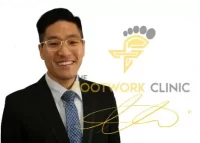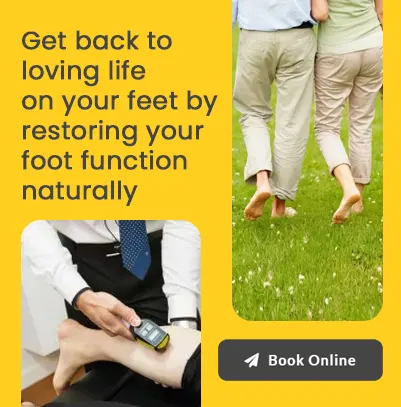Sportspeople, whether amateur or professional, love what they do. Whether it’s just the daily run or preparation for serious competitions, life just doesn’t seem the same without the activity that gives them so much pleasure. Unfortunately, injuries put all that on hold – at least until they’re recovered. For many, the absence of pain seems to be the signal that it’s time to get back on track with their favourite sport, but Mark Lin, a Sydney-based sports podiatrist warns that absence of pain is not an accurate measurement of recovery.
The Absence of Pain
When it comes to injuries, pain is just the tip of the iceberg. Mark Lin uses the “tip of the iceberg” analogy to demonstrate his point. The really big problem – be it muscle dysfunction or issues with the alignment of feet and ankles – could be hidden.
The human body is very good at compensating when things aren’t quite right. The good and the bad thing about that is that pain isn’t necessarily the only symptom of trouble. When there is an absence of pain in an injury, people begin to adjust their movements to compensate, meaning that the body isn’t working as it’s designed to. The result is inevitable – especially when people are pushing themselves to the limits. Having had enough of the strain, something “gives”, and their body lets them know that enough is enough by sending pain signals.
Recovery from traumatic injuries, though they are a sudden occurrence, works in much the same way. The body compensates, and initial treatment interventions provide faster relief. With the absence of pain, many athletes will decide that it’s time to get active again. It’s risky, warns Lin. The chances of being injured anew are very real – unless the movement mechanisms are back up and working in exactly the way they should.
At the Footwork Clinic, Mark and his team will strive to eliminate pain and discomfort, and they will apply various therapies to speed recovery, but the healing process must still run its course which means understanding the absence of pain doesn’t indicate you are fully healed.
How to Know When It’s Time to Get Active
As with so many things sport-related, knowing when someone is ready to return to track or field requires teamwork. Just as sportspeople rely on coaches and trainers to boost their performance when they are well, they need to rely on their team of therapists to help them assess their recovery following a sports injury.
Mark and his Footwork Clinic team are able to assess recovery and demonstrate the progress sportspeople are making in this direction using scientifically-proven measurements and technological advances. “Sports podiatrists know that people are eager to get active again,” says Lin, “but it would be irresponsible to give them the go-ahead based off the absence of pain, until there is further evidence that they’re ready. Healthcare professionals won’t hold sports-lovers back a minute longer than is necessary, and they understand that sportspeople feel frustrated when they can’t be as active as they usually are, but real healing takes time, even when therapies are fast-tracking the process.”
“The Footwork Clinic specialises in feet, ankles, and lower limbs. For upper-body injuries, sportspeople may be working with other therapy professionals. However, regardless of the type of injury, it’s important to understand that the absence of pain and feeling better, and actually being better aren’t necessarily the same thing.”
Prevention is Better Than Cure
In closing, Mark reminds that it is crucial to know that the absence of pain can just be the tip of the iceberg, explaining that when someone pushes their body to the max it can uncover breaking points they didn’t even know existed. Assessment could uncover hidden dangers. “Just as people visit the dentist to make sure their teeth are OK, it is advisable to visit a sports podiatrist for assessment before underlying issues manifest themselves in the form of pain or injury.”
The Footwork Clinic, situated in Chatswood on Sydney’s North Shore and Sydney CBD, is there to help should you have an injury or condition that you think would benefit from heat or ice treatment. They offer advanced manual therapies and a holistic and corrective care approach, with a proven track record of success in resolving acute and chronic conditions, and they will gladly offer advice to get you on the road to recovery as soon as possible.
For further information, visit the The Footwork Clinic – Leading Sports, Podiatry, Foot And Lower Limb Corrective Services to book online, or call Mark Lin or his friendly team on +61 2 9131 6891.
Want a faster response or ask us a quick question? Click here to chat with The Footwork Clinic LIVE on Facebook Messenger.
The information contained in this guide is provided in good faith and is not intended to be nor is it to be used as a substitute for any sort of professional, medical or podiatric advice. An accurate diagnosis can only be made following personal consultation with a podiatrist. Any users should always seek the advice of their podiatrist, or other qualified healthcare providers before commencing any treatment.
Article managed by Storybrand Website Designs & Digital Marketing Agency Results and Co










